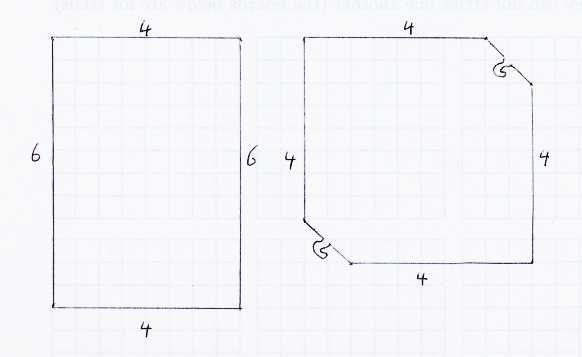Department of Mathematics, Statistics
and Computer Science
Wim Ruitenburg's Spring 2008 MATH025.1001
Mathematical puzzles are more than just recreation, just as child's play is
more than just fun.
Mathematical puzzles are excellent training for problem solving skills.
Mathematical puzzles
We use the book, pages 28-32, as part of the following list of illustrations
about mathematical puzles.
- Problems 1 and 3, on exchanging money and on buying and selling, are
mathematical puzzles.
However, they are not too exciting; they look like beginning business math
textbook exercises.
- Problem 6 on the 3 switches and the light (a 100W lightbulb, really), is
not really a mathematics problem; its solution needs extra principles
from physics.
It is usual for a solution to a puzzle, to need scientific principles from
outside the ones stated in the problem, but they should be kept to a bare
minimum, and be obvious from the context of the problem.
- Here is a classic-style word problem:
- The captain of the ship is twice as old as the ship was when the ship
was as old as the captain is now.
Together they are 56 years old.
How old is the captain?
How old is the ship?
In solving this puzzle, we named things, got 3 equations with 4 unknowns, but
then we still had to solve the part of what makes this a real puzzle.
- Here is the sanitized version of a classic word problem:
- Two women are sitting at a roadside cafe, talking about family.
One mentions that she has 3 daughters the product of whose ages equals 36.
Remarkably, she mentions, the sum of their ages equals the number on the
house across the street.
The other replies that this is not enough information to find the ages of the 3
daughters.
True, says the one, but note that my oldest daughter has beautiful eyes.
Ah, says the other, but then I know your daughter's ages.
What are the ages of the 3 daughters?
We solved this puzzle by thinking real hard.
And with some "paperwork."
- Problem 5 of the book, with boxes A and B that both have true statements
or both have false statements, is a logical exercise, without surprises.
- Problem 8 about the 3 missionaries and 3 cannibals at the river's edge,
and the boat that holds only 2 people, is a classical puzzle.
The solution involves a counterintuitive act.
- The following problem is not in the book.
Consider the two pieces of paper below, outlined by solid lines.
The dotted lines are only an auxiliary grid by which we can see that the
first piece of paper is a 4 by 6 rectangle, and the second is a 5 by 5 piece
with two opposite corners clipped.
Problem: Show how to cut one piece into two parts by cutting with a scissors,
so that the other paper can be obtained by putting the two parts together in
another way.

- We seem to make the puzzle above harder by asking to solve the same clip
and paste question for the following two pieces of paper:
 Did we really make it harder?
The more complicated picture on the right leaves so few possibilities to try,
that it should be easier.
Did we really make it harder?
The more complicated picture on the right leaves so few possibilities to try,
that it should be easier.
Last updated: February 2008
Comments & suggestions:
wimr@mscs.mu.edu

